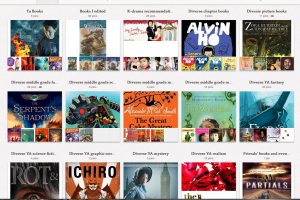The Whitney Awards are a fairly new award given out at the LDS Storymakers conference that honors novels written by LDS writers, both in the niche LDS market and in the national market. Every year, you can nominate titles for the committee to read and vote upon.
They’ve started to announce the books that have gotten enough nominations to be considered “official nominees”—these are the books that will be considered and whittled down to finalists.
You don’t have to be LDS to nominate books, but the author or authors do need to be members of the Church of Jesus Christ of Latter-Day Saints, a fact that’s hard to determine sometimes when looking at books published for the national market. I have a particular interest in the Speculative and Young Readers (mislabeled Young Adult) categories, given my interests, and while several good books have been nominated, I think that several haven’t made the list for official nominations yet that ought to be.
So, if you have an interest in books by LDS authors published in 2010 that aren’t already official nominations—see the Rules page here for criteria; note that books for young readers need to be at least 20,000 words long and novels for adults need to be 50,000 words long—please feel free to pop over and nominate, especially if you know for a fact that a particular writer is LDS that hasn’t ever been considered for the award. As I said, sometimes it’s hard to determine if an author qualifies; I hate to just assume that someone with ties to BYU is LDS, because I knew plenty of non-Mormons while there as a student, and there are quite a few LDS authors who never lived in Utah or went to BYU as well. Sometimes bios don’t include that information, for obvious reasons—it’s not a professional credit to announce your church affiliation.
Remember, this is just the preliminary nomination—books of merit that should be considered. From there, the committee will whittle each category down to five finalists, and then (I’m fuzzy on the process, but they outline it on their site) will vote on which ones get the awards. So, in my opinion, the list of nominees should be pretty long.
In case anyone was wondering, below are the titles I nominated, to ensure that a large range get considered. I didn’t re-nominate anything that had already had enough votes to get on the list. If you like these books, consider nominating them, or others published last year by LDS authors. My list focuses on the national market, because that’s the market I know best, but you can also nominate books published in the LDS market (sold in LDS bookstores and catalogs).
I had several nominations. This first was for debut novel, but I’m not sure if the author is actually LDS. She has some affiliation with BYU and lives in Utah, but as we all know, that doesn’t mean she is. If anyone can confirm or deny (privately), I can let the committee know.
- Kristin Chandler, Wolves, Boys, and Other Things that Might Kill Me, Viking
In speculative and/or young readers:
- James Dashner, The Scorch Trials, Random House (YA or speculative)
- Ally Condie, Matched, Dutton (it comes out at the end of this month; I’ve read an ARC)
- James A. Owen, The Dragon’s Apprentice, Simon & Schuster
- Aprilynne Pike, Spells, HarperTeen
- Becca Fitzpatrick, Crescendo, Simon & Schuster
- Mette Ivie Harrison, The Princess & the Snowbird, Bloomsbury
- Bree Despain, The Lost Saint, Egmont (it comes out Dec. 28; what with the cutoff being so late but the nominations coming so early, I wonder if her Dark Divine ever got nominated for debut last year?)
- Carol Lynch Williams, Glimpse, Paula Wiseman Books/S&S
- Julie Berry, Secondhand Charm, Bloomsbury

